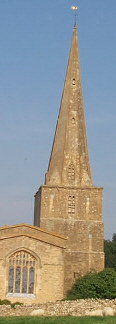 |
Saintbury Village and ChurchA Cotswold Village in Gloucestershire, UK |
 |
 |
Saintbury Village and ChurchA Cotswold Village in Gloucestershire, UK |
 |

| Village History | St Nicholas' Church | Ridges and Furrows | Saintbury Cross | Local Trusts |
| Willersey has a facebook page. Home Page | Menu & Search Page Email us here:- |
|
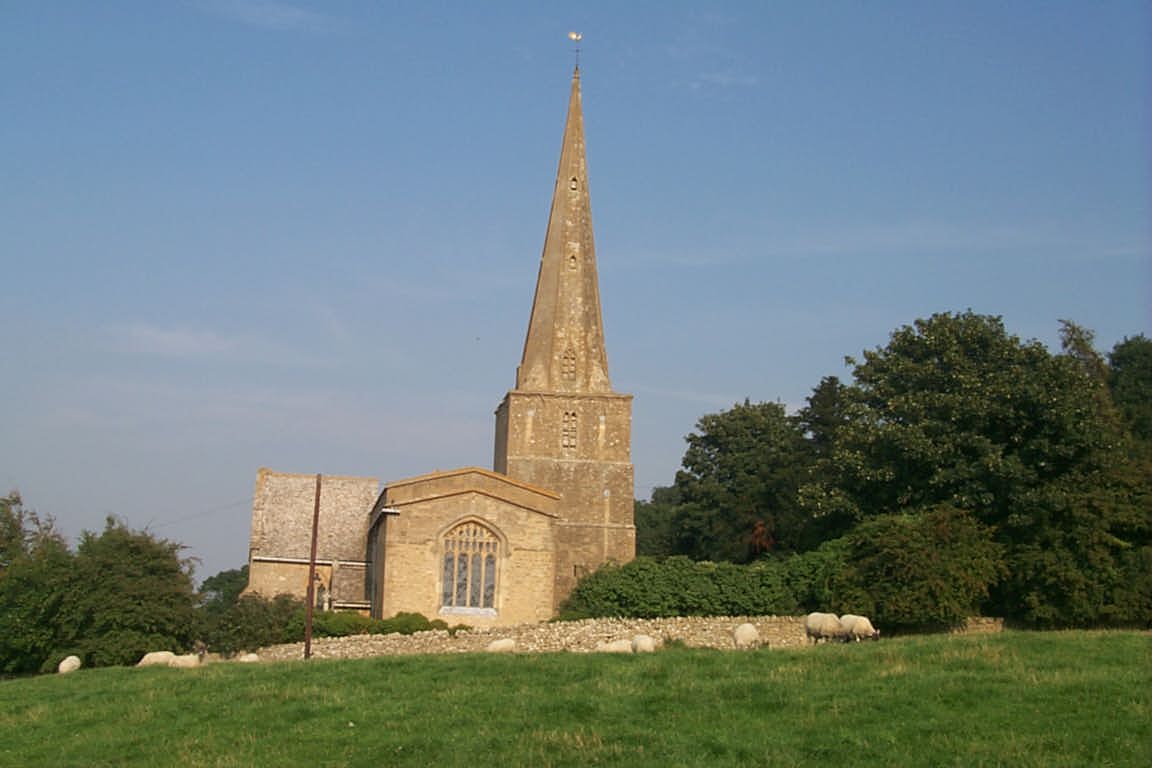 Saintbury was founded in the 12th century. In Kelly's Directory of 1923, Saintbury was described as a village and parish, 3 miles south from Honeybourne station on the Great Western railway, 30 miles north-east from Gloucester and 3 miles west from Chipping Campden. When you stand and look at the view from St.Nicholas' Church you are on the north-western edge of the Cotswold oolitic limestone hills. Looking west the land falls away to the Vale of Evesham and beyond to the River Severn. This flat land with its deep loam soils, by way of Willersey, Childswickham, Aston Somerville and Sedgeberrow is a fertile bed, which has yielded Many varieties of fruit & vegetables and honey for centuries. 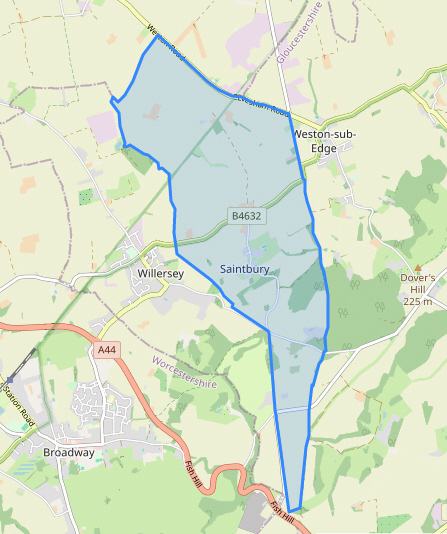 In 1712, Saintbury was recorded as having 54 houses with a population of 200 and in 1762, 31 houses and a population of 138. As of the 2011 census, it had 32 houses and a population of 83. Notice the decline in the number of residents per house. The name Saintbury is thought to come from Swain meaning villager and Bury meaning hill or Burth meaning fort, which given the village's age and hillside location, makes perfect sense. The Church of St Nicholas is described as “a building of stone in the Norman and later styles, consisting of chancel, nave, transepts, north porch and a tower with a spire.” The east window retains some ancient stained glass, representing St Nicholas. It was restored in 1907 to 1913. The parish records of baptisms dates from 1561, of marriages from 1585, and of burials from 1603. An octagonal stone table could have been a dole table outside the Church where lepers would gather to eat food left for them. Lepers were often at the time compelled to walk from place to place. H.J. Massingham in his book “World without End” whose summary of neighbouring Saintbury cannot be bettered. “Almost every house in Saintbury is separated from its neighbour by twists in the hillside. This meant orchards or tipped up pastures and even the big chestnut in the centre is all to itself. The little steepled Church of Norman blood and Saxon lineage likewise perches quite alone, not merely overlooking the vast Evesham Vale where Bredon and the Malverns stand like hippos in a shallow lake but craning over it a few steps and to top it into its so abrupt cliff behind it. Houses here and houses there that is Saintbury.” For the rest Saintbury is indelibly associated with Algernon Gissing. One of the early band whose writings made Cotswold known to the outside world. The living was a rectory in the gift of Capt. H.C.J. Alston-Roberts-West, R.N. and had been held since 1900 by the Rev. Richard Muriel Nason M.A. of Magdalene College, Cambridge. The church's earliest known feature is a sundial considered to be 11th century. The early finely carved box pews are an 18th century addition and there is a notable collection of 17th and 18th century ledger slabs in the church. 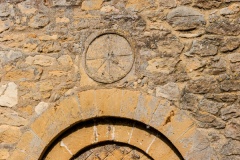 Here are many more details of St Nicholas' Church. With only two congregation members this precious medieval Cotswolds Church had to be saved from sliding into dereliction. The church was unsustainable the population was small and aging. Saintbury will still be a consecrated church but new uses could keep it alive as a centre for the community. It would be especially good for exhibitions and small-scale concerts, such as string quartets, discussion groups, small choirs and even a folk band. Sadly St Nicholas' Church last service was in 2009, and since Lady Day in 2011 it has been in the care of The Churches Conservation Trust, which in 2021 preserves 352 churches countrywide. They are irreplaceable buildings which attract almost 2 million visitors a year. For opening times, please telephone 0117 929 1766 before your visit. Saintbury Church has memorials and fittings from every one of the eight centuries of its life. There is a downward trend in the number of churches in the UK. Almost 1,000 have been forced to close in just over 30 years at 940 in number between 1987 and 2019. This means that the total number of churches left stands at around 15,496 in 2021. In 2013 a number of paintings dating back to the 1630s were found in SAintbury Church for the first time in 150 years. They were probably limewashed over in Victorian times and consist of detailed biblical texts surrounded by an intricate border. This Grade I listed medieval Church is near to the Cotswold Way footpath and has a tall and slender spire, which can be seen from all around and is a really notable landmark. Notice that from some angles the spire is not completely vertical. The saxon mass dial above the blocked Norman doorway has rays not scratched in the stone but carved in relief with little crosses to mark service times. The Church has a quiet graveyard which is a really superb place for uninterrupted contemplation. There are some interesting early post-medieval wall paintings in the Chancel and visitors may also be interested in the Arts and Crafts features that were added in the early 20th Century, including the Chancel and north chapel ceilings; the north chapel screen (c1904 by Ernest Gimson); the north chapel reredos (c1920 by Alec Miller) and the Chancel chandelier (1911 by Charles Ashbee). This chandelier is now displayed in the Court Barn Museum in Chipping Campden. 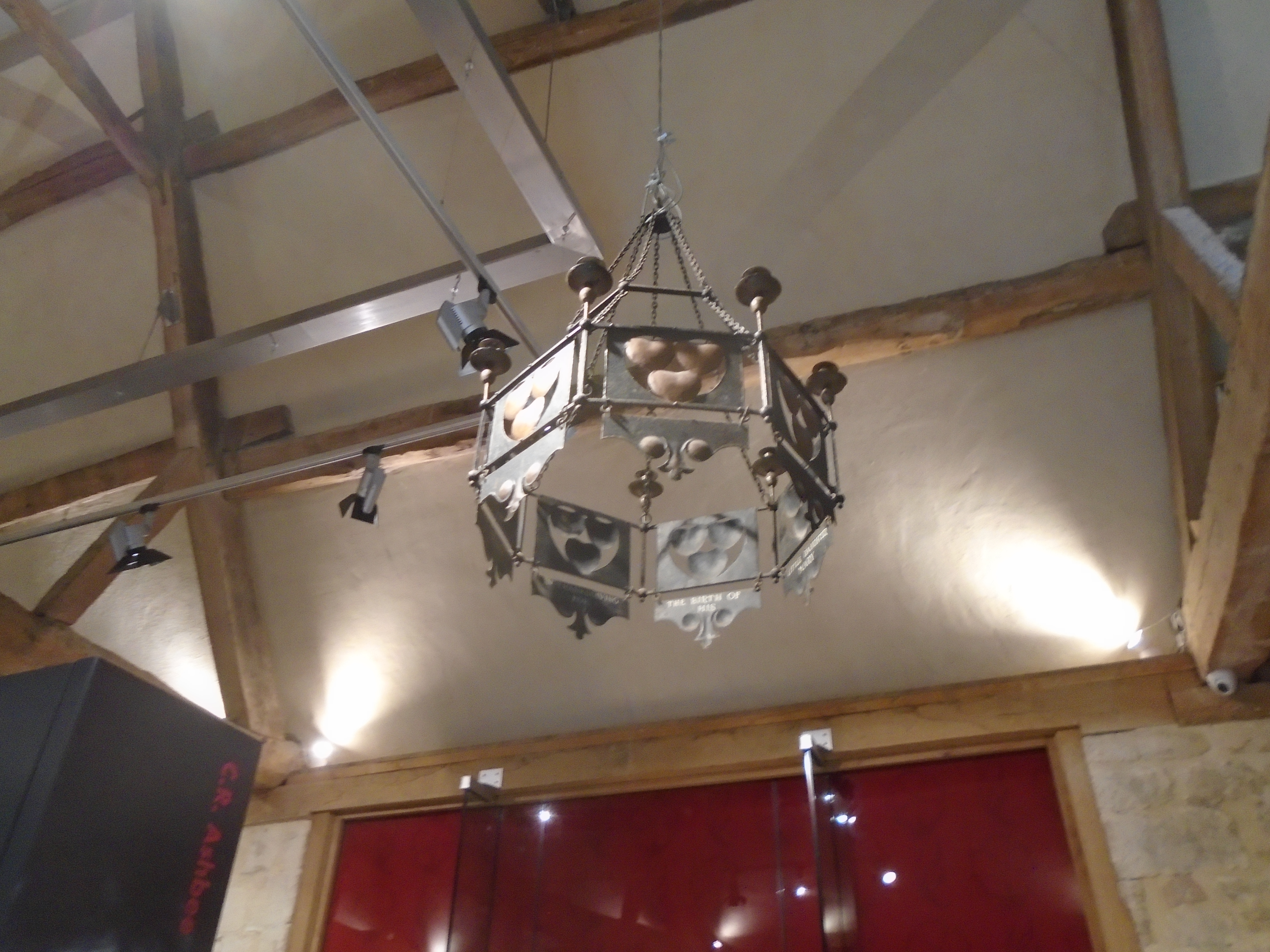 Saintbury Church is one of the few churches with Saxon work. The Saxon mass dial above the filled up Norman doorway is one of the most interesting in Gloucestershire for it has rays not scratched in the stone but carved in relief which may have told the time. Those for a service are marked at the ends with little crosses. The tower with its graceful spire has stood for 600 years. Modern lead work on the roofs and walls is adorned with flowers and fruit. Guarding the fine oak door in the Norman doorway is a small figure of Saint Nicholas in a niche holding a ship and staff which is far pleasanter to look on than the man's face above him which may be Norman. Older still is a precious piece of sculpture in the splay of a chancel window showing a very crude figure with traces of grotesque features in the head, a square body and two stumps for legs. It looks as if it had been carved by a child and is thought to be Saxon. A rare 6 sided table of stone in the South transit may be older than the oldest part of the church and in the north transept under a small Jacobean table is another great stone which probably served as an altar in mediaeval times. Very pleasing is the font which is 500 years old. Its bowl is enriched with an imitation band of Norman star carving. Rich and rare glass fills part of the east window. It is 5 or 600 years old and shows a small sitting St Nicholas with St Barbara at his side in a blue and white robe holding a tower there is also a Bishop, Angel and a monk. Framed in stone is a painted figure of William Warburton in his black skull cap and white collar which he wore when he was the rector here in the 17th century. He has a pointed beard and holds a book. The nave has its original 15th century timbers and the chancel a newer panelled roof with 80 charming bosses of gilded flowers and leaves. No two are alike. The chancel screen is adorned with small flowers. Old and new benches have served the worshippers of Saintbury for five centuries though some are restored and there are two sanctuary chairs made out of similar benches. The oak altar rails are 17th century and there is a chair and a chest of the same age. In the nave is an old picture of Mary and our Lord. Among the trees in the churchyard is a great yew 16 feet round it is seen the centuries past but it is perishing alas. The Cotswold house called Latimers in Weston sub Edge has been both a theological college and an inn. It was also the family house of William Latimer, a Reformation scholar and translator of international reputation. He became a Fellow at All Souls College. As well as at Oxford and around London, the Reformation was also born in the country houses of the Cotswolds. He was a friend of Sir Thomas More and a tutor of Cardinal Reginald Pole. He established the study of Greek at Oxford by collaborating with Erasmus. Latimer asked to be buried in Saintbury churchyard in 1545 and is now in an unmarked grave overlooking the Vale. William Smith, Saintbury parish clerk and roadmender in the early 1900s had played in Church orchestras before the use of organs and harmoniums. His life is well documented in Gissings Footpath Way in Gloucestershire. Gissing recalls amongst other stories that Smith chopped up the village stocks for firewood. Providing light to the chancel is an early 20thcentury Corona designed by Arts and Craft leader CR Ashbee. Ashbee was social reformer and architect, and a leading figure in the Arts and Crafts movement. The sanctuary rails are early 16th century, and on either side of the altar are Arts and Crafts style candle holders carved from oak by the Campden Guild. The route taken for funerals was commonly called a “corpse way” in this area, and on these routes we often see the motif of resting the coffin at a crossroads. At this crossroads the coffin bearers would change positions, which may be a form of the ritual reversal often connected with forging links with the otherworld (which is why, perhaps, suicides were often buried upside-down), the concept being that the land of the dead was much like ours, but with everything reversed. The purpose of all this was probably to ensure that the soul left the body so it would not later rise from the grave.If you favour the theory that crossroads confuse spirits, then the point would still appear to be to disentangle the spirit from the corpse by losing it at the crossroads. Saintbury Cross is at a crossroads downhill from the Church. It was used as a resting place for funeral processions before they started their way up the hill to Saintbury Church. Most of the original Saintbury houses were separated from each other by twists in the hillside. You also had to be quite fit to live there as outside the house you would often be walking up or down hill. In 1910 most houses had cowsheds under the same long roofs as the farmhouse so the animals could keep everyone warm in the winter. A well-known ley, at Saintbury in the shadow of the Cotswolds, (first put forward by Devereux and Thompson was recently re-examined by Devereux: "... it is 3.5 miles long, running from the crossroads and cross near Weston-sub-Edge in the Cotswolds, through Saintbury's ancient St Nicholas church, and on through prehistoric mounds and a pagan cemetery to the curious feature surrounding Seven Walls Farm - a medieval gathering point for rural wise women ("witches"), it seems. Saintbury Church tower has a peal of 8 bells. The 6 bells at the back have been there a long time and were hung with new fittings in 1983. Inscriptions on these bells read I Rudhall fect 1835 Henry Bagley made mee 1678 Henry Bagley of Chacombe 1678 Henricus Bagley me fecit 1678 Henry Bagley made mee 1678 John Freeman and William Hobbs Churchwardens 1678. In 1999 two trebles were added by the Whitechapel Bell Foundry of London. It is possible to hear both the bells at St Nicholas's and St Peter's Churches in Willersey. Maybe one day they will provide a stereo peal! On Sunday 19th July 1983 at 3:00pm the bells were re-dedicated in a service conducted by the Archdeacon of Cheltenham, the Venerable Thomes Eric Evans MA. A local vicar can still conduct two to six services a year as well as baptisms, funerals and weddings. If you are on the path leading to the old Village Stores, now Thyme Cottage in Willersey heading towards The New Inn, you can just see the spire of Saintbury Church nestling on the hills between the two houses opposite. |
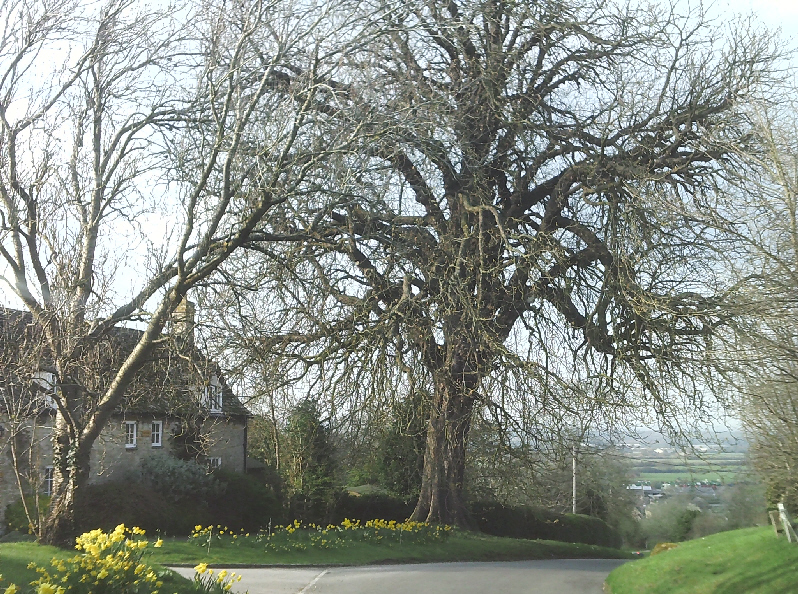
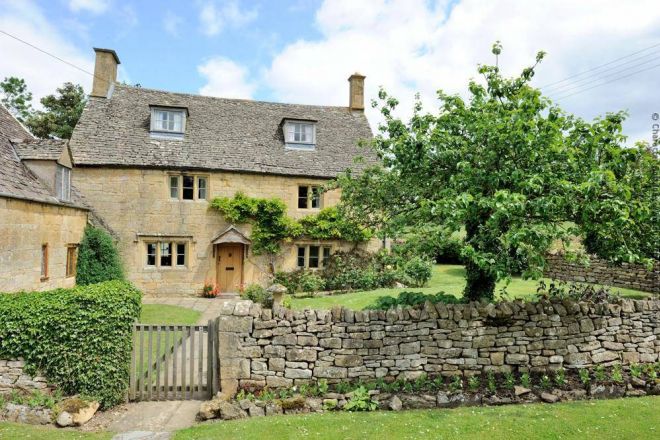 |
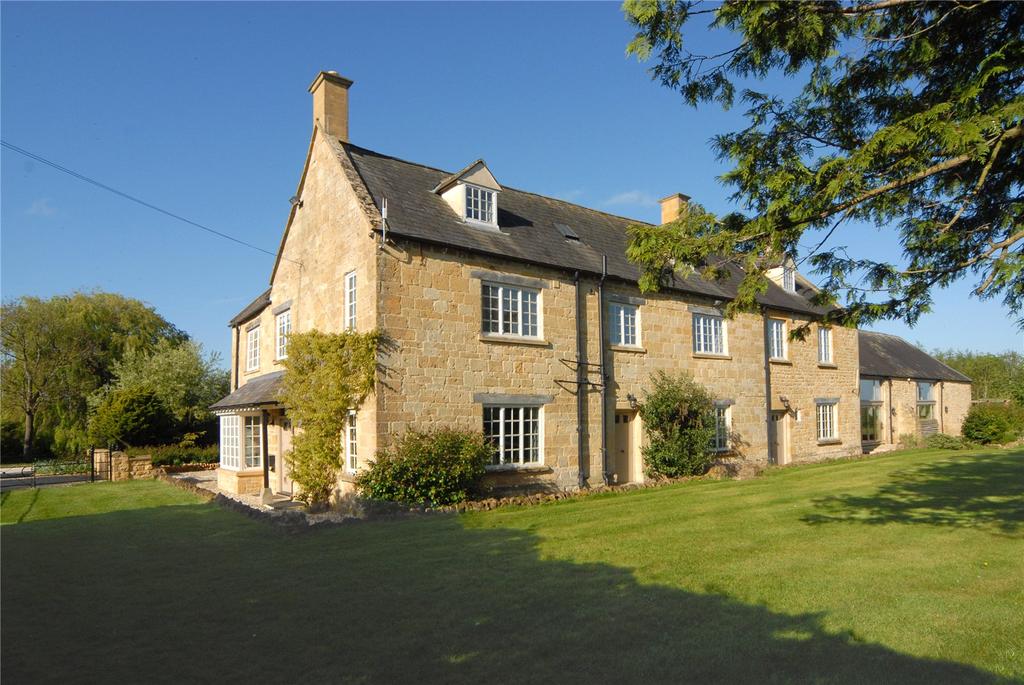
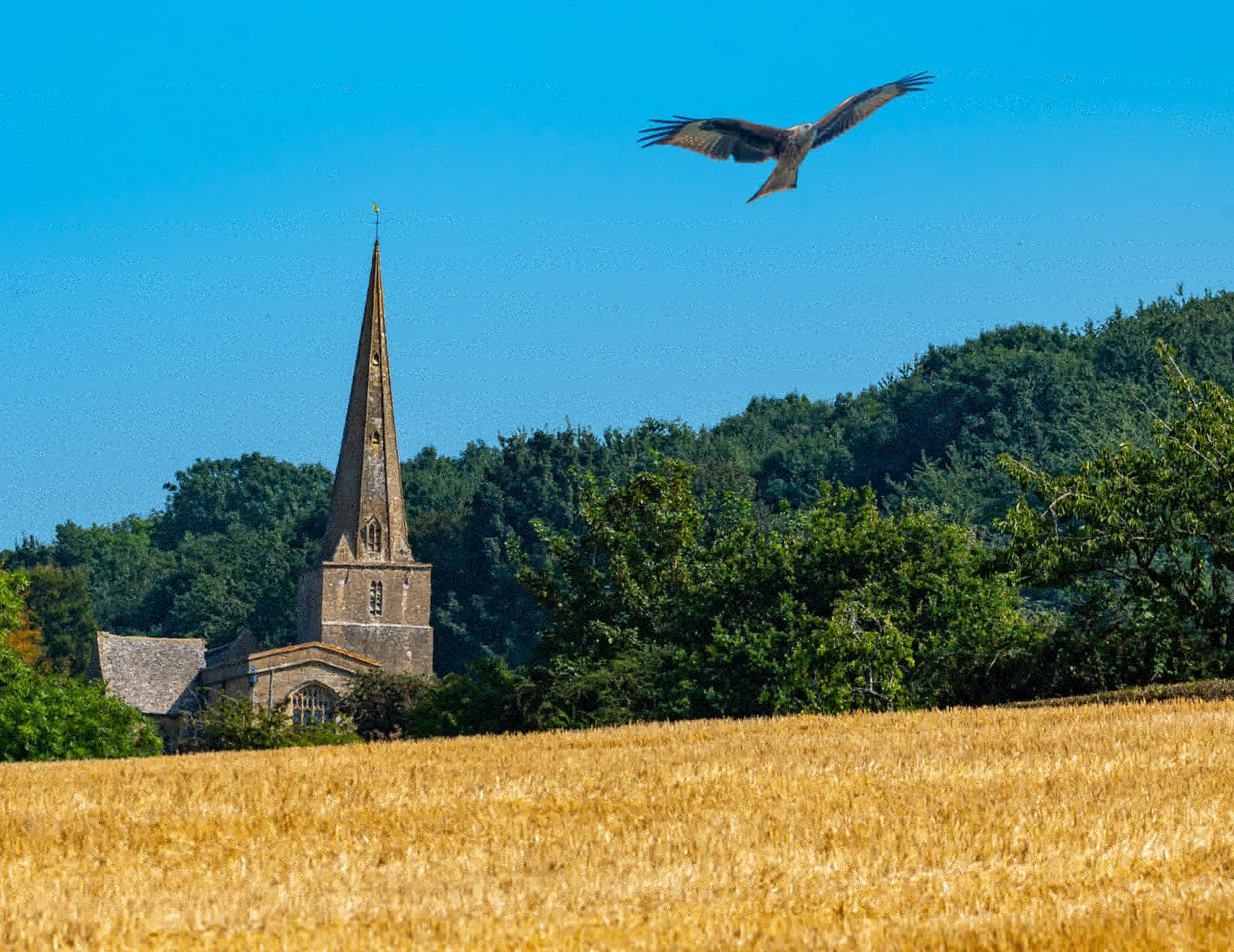
|
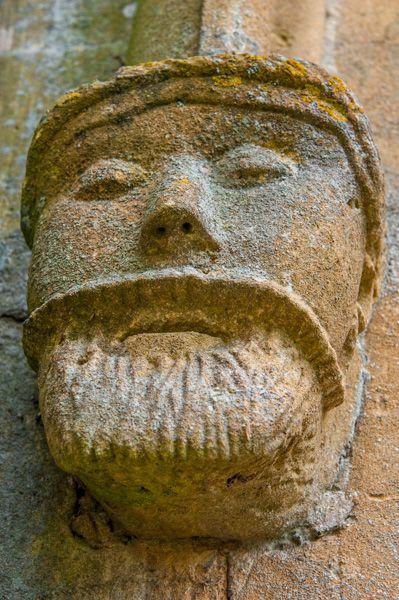
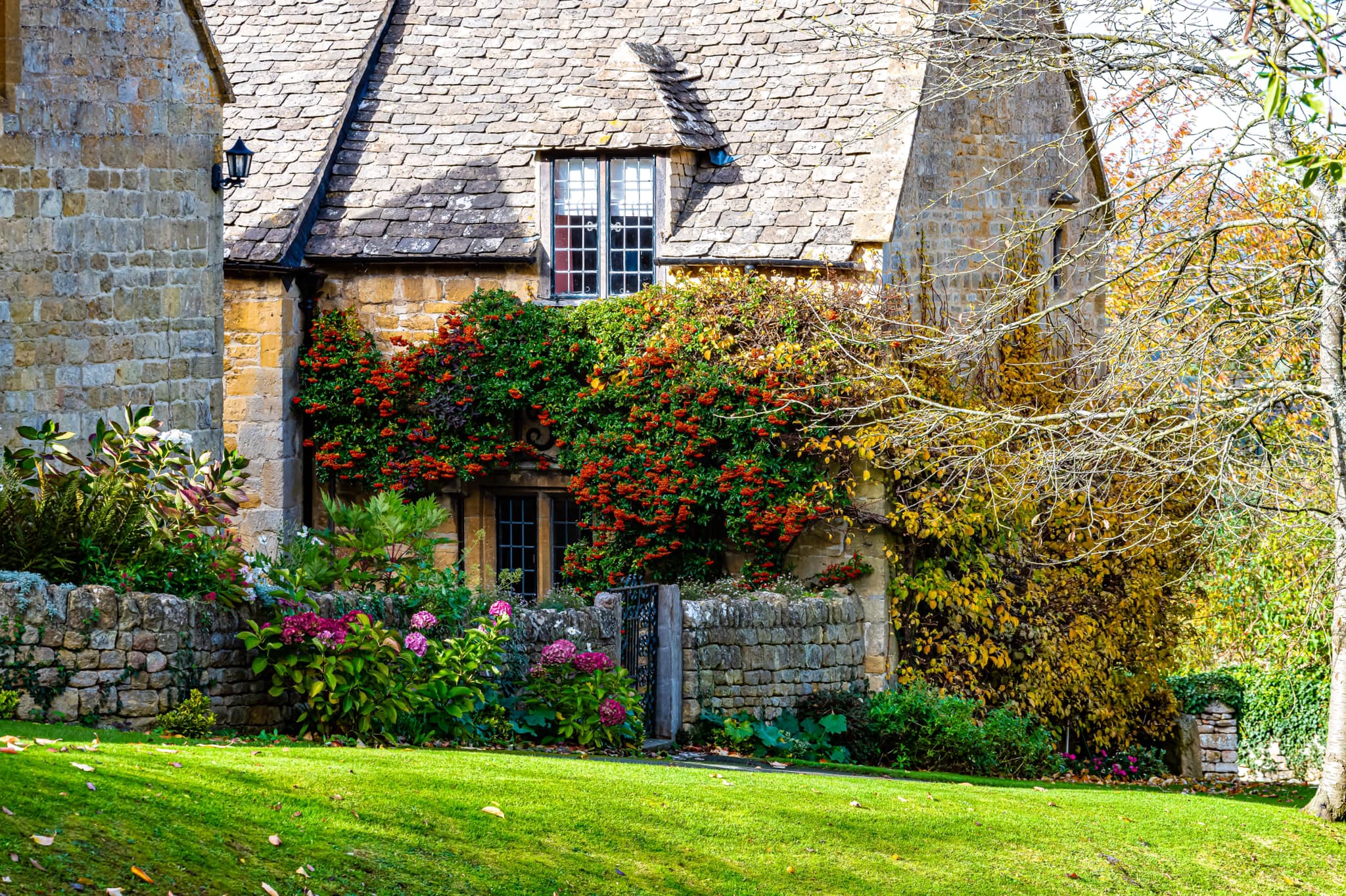
|
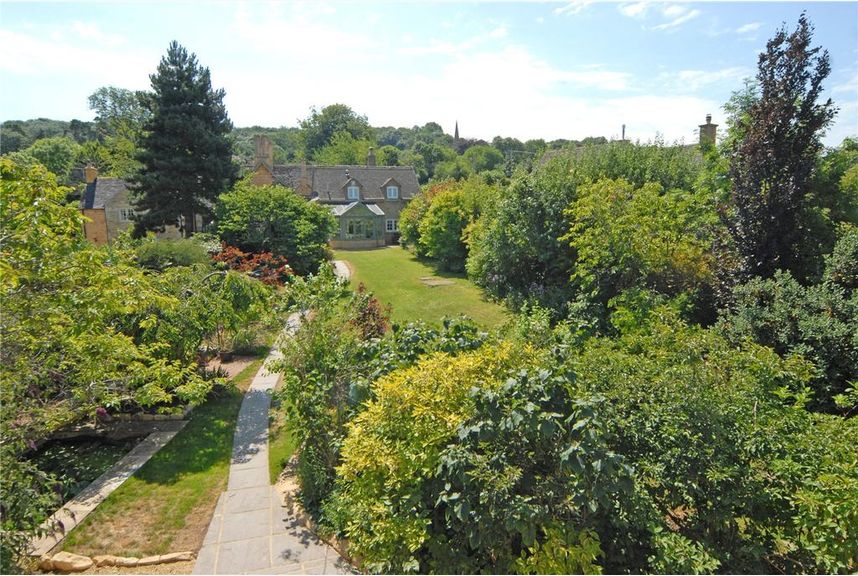
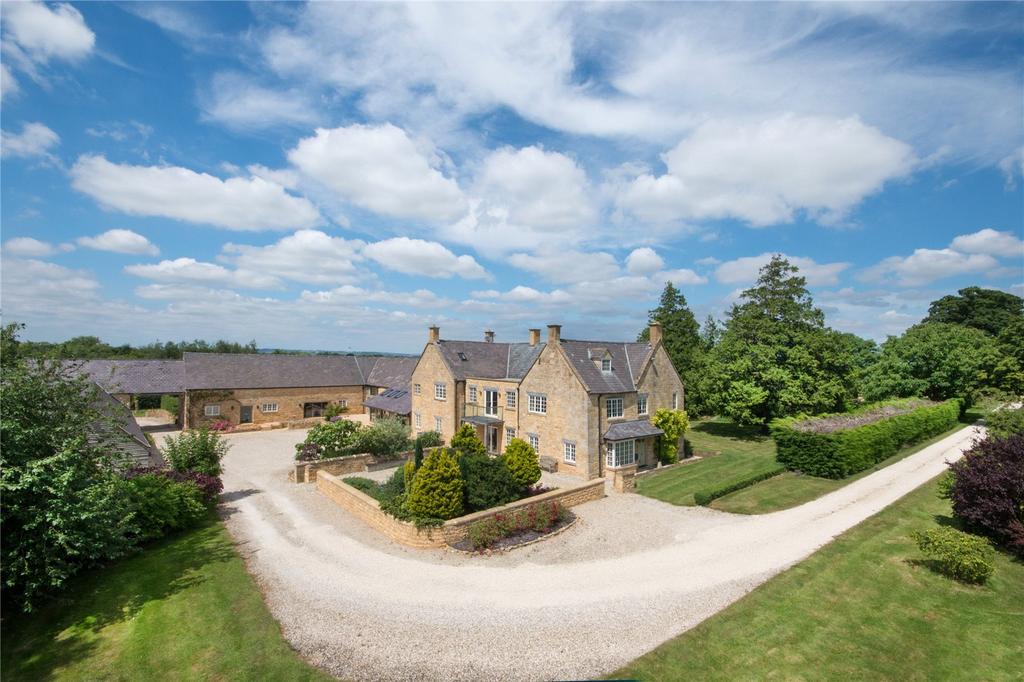
|
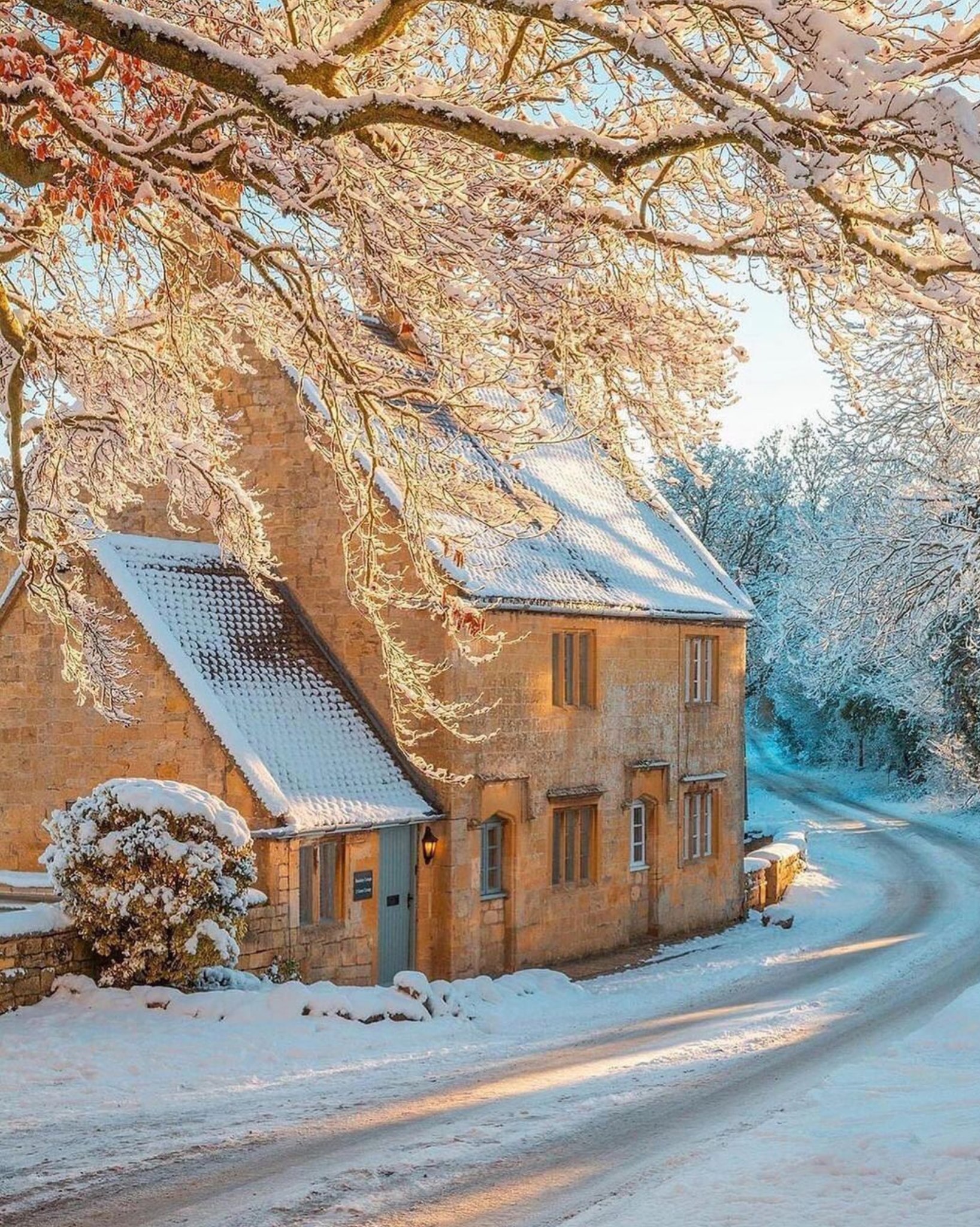
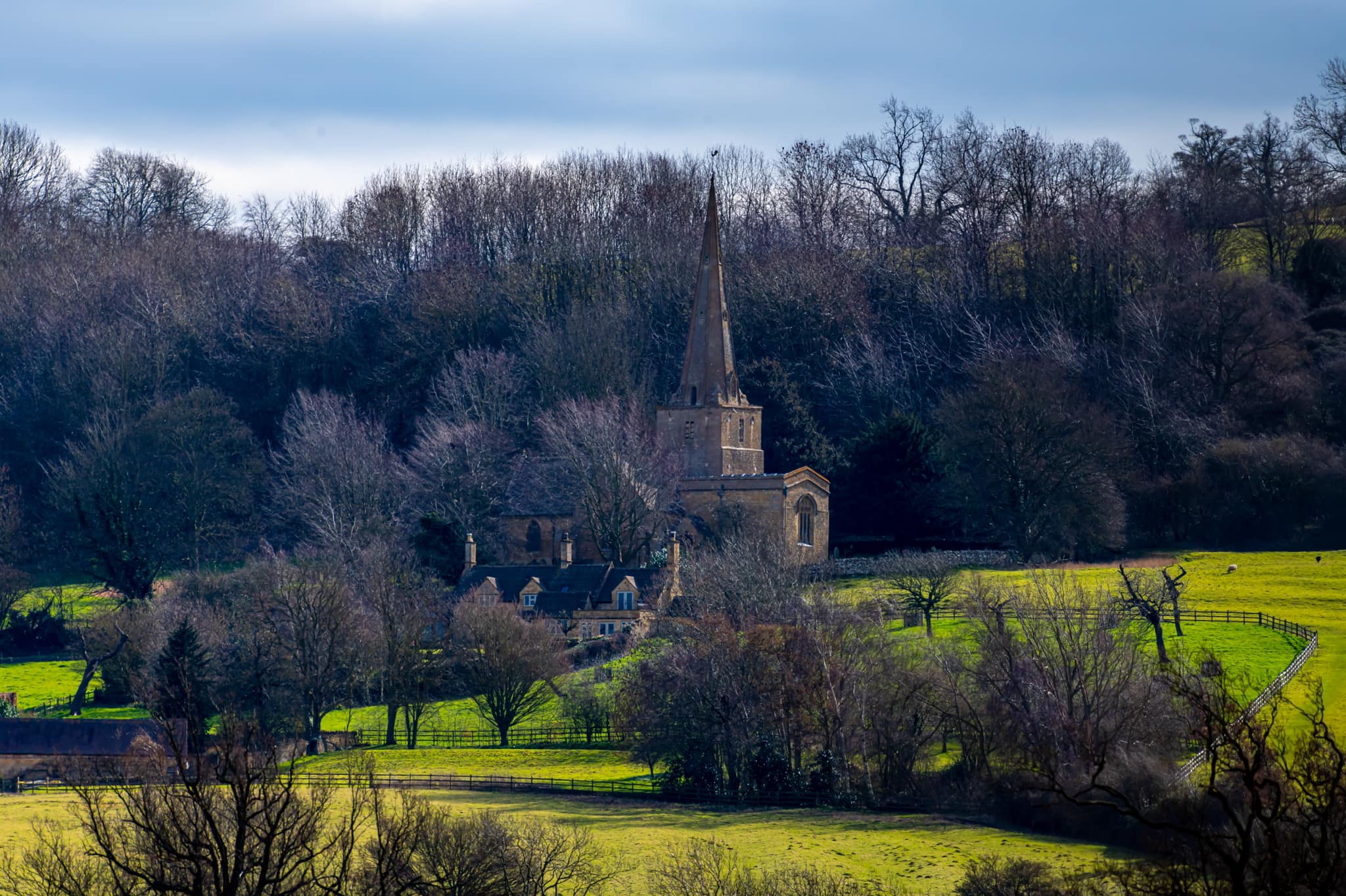
|
St Peter's in Willersey with St Nicholas' in Saintbury behind. 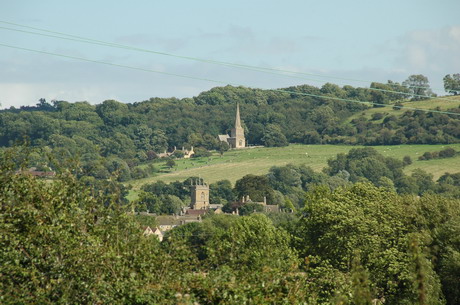 Starting at St Peter's there is a really worthwhile walk to St Nicolas' with spectacular views over the vale of Evesham, usually along with some curious cows and indifferent sheep! ( Its downhill on the way back.) In recent times at Willersey events a race between the two Churches has been run. These videos will give you a good picture of the local countryside. Go to top |
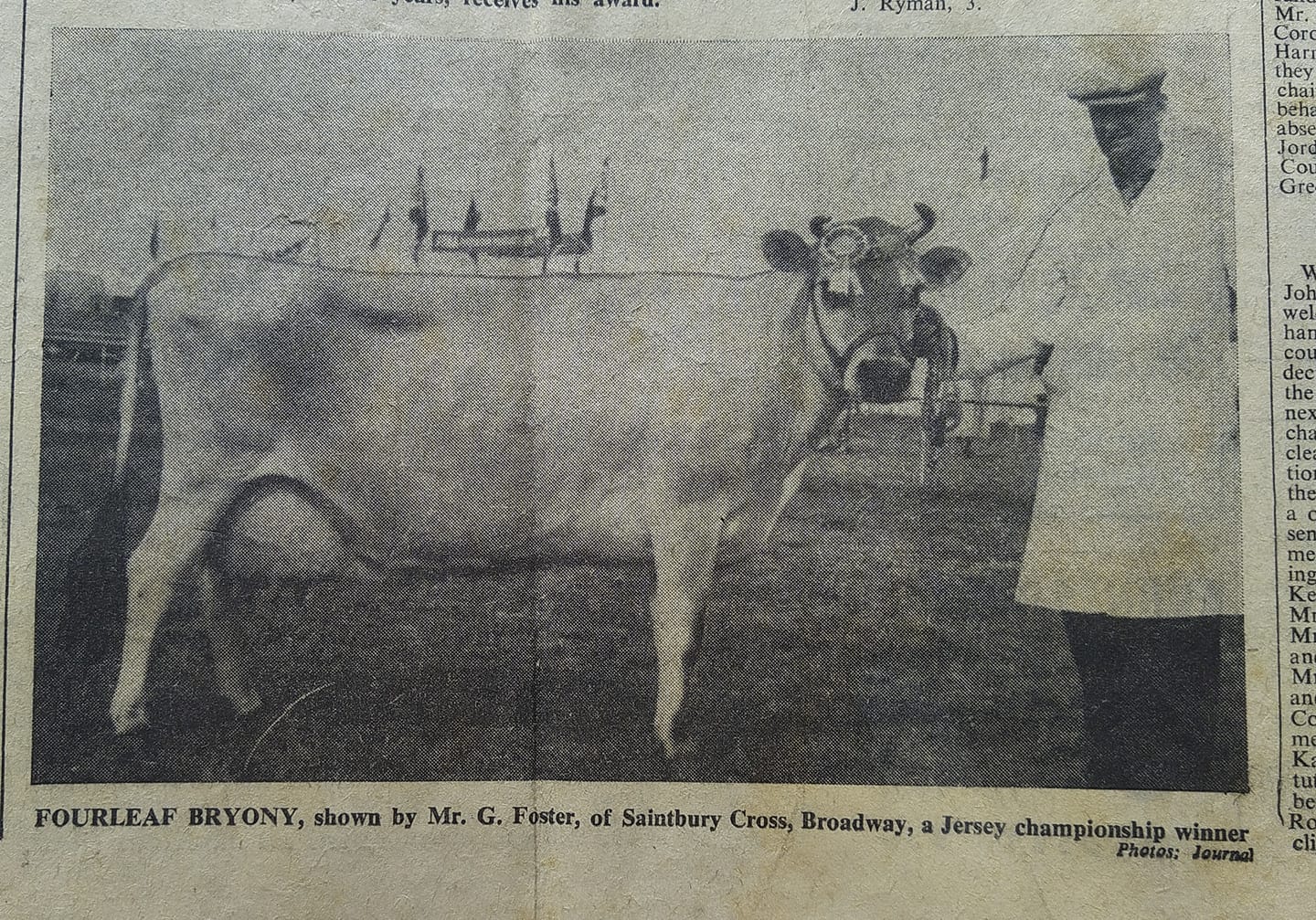 |
In some fields you may notice quite large ridges and furrows. 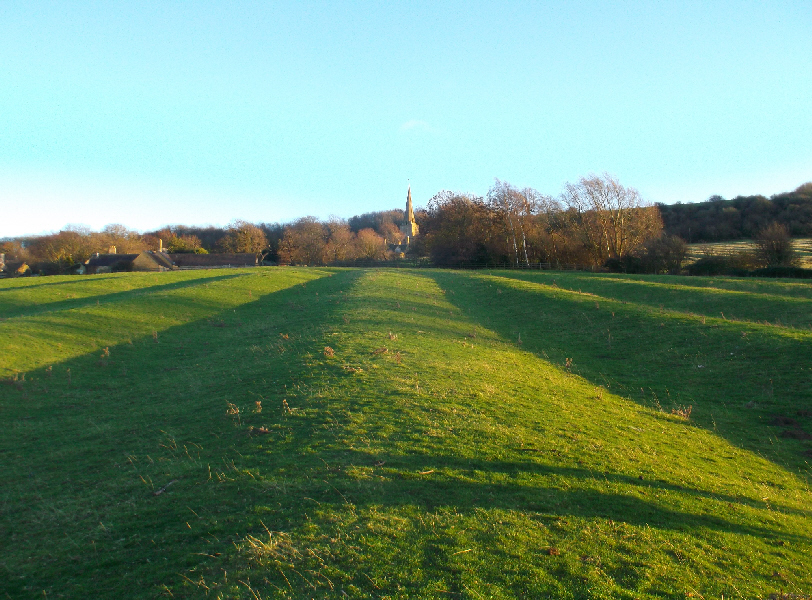 Ridges and furrows highlighted at sunset with St Nicholas' Church in the background. In Anglo-Saxon times, families owned strips of land with their neighbours farming adjacent strips. Traditional ploughing with a single furrow plough turned the soil over to the right so as there was no point in the plough returning doing nothing along the same furrow, ploughing was done in a clockwise direction around a long rectangular strip of land. After ploughing one of the long sides of the strip, the plough was lifted, moved across the unploughed headland and then put back in the ground to go back down the other side. Over time soil was moved towards the centre line thus creating the ridges and furrows. Sometimes the ridge has a slight “S” shape as the ploughman was always fighting to keep the plough straight given its asymmetrical shape. The length of the ridge was often determined by the work that a team of oxen could do before taking a rest. These ridges also had the benefit of increasing the available soil area slightly as well as improving drainage since most ridges are aligned down a slope. It can be hard work walking across a series of the deeper ridges and furrows and some furrows can be quite boggy, even in dry weather. Go to top |
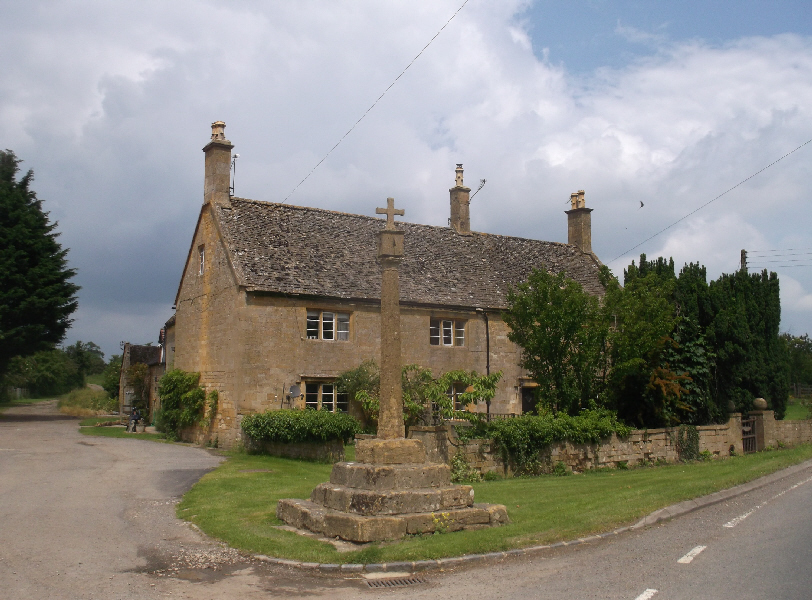
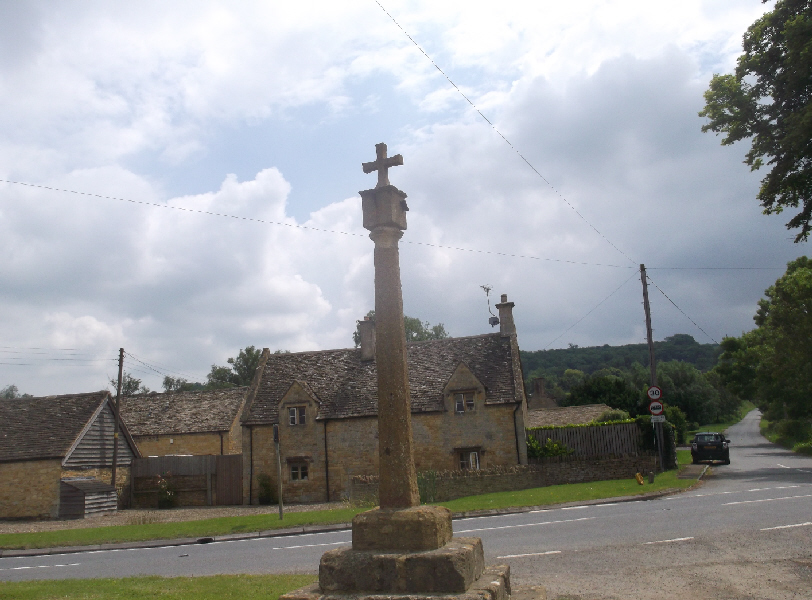 |
Saintbury Cross is on the B4632 road at the bottom of the village. . The lower section of the cross at the junction of the Saintbury and Willersey to Weston-sub-Edge road dates from about 1400 and is 11 feet high. The Maltese cross and sundial on top were added in 1848. Many Cotswold villages have similar crosses. The sundial is an unusual design. Because it is vertical, rather than horizontal, the shadow forming shapes (gnomons - good scrabble word?) are distributed around all four faces of the cross. Pillar dials like this one usually carry three or four vertical direct dials to ensure coverage throughout all daylight hours. Saintbury Church has a Saxon sundial. As it is built on the side of the hill with the main entrance on the north side, one has to climb further up the hill to see the rather inaccessible south side on which a vertical sundial had to be placed. The Saxons chose this location. As it was normal in the 19th and 19th centuries for churches to have sundials. Usually one was placed in the churchyard, but at Saintbury the pillar dial was eventually put at the nearby road junction. Sundials used to play an important role in regulating daily life in the UK. The study of the construction of sundials, or the 'Art of Dialling', was a part of a good education. Only with modern communications and the extreme accuracy of modern clocks has the sundial been eclipsed (pun?) as a scientific instrument. They still however give good readings as they don't need battery changes or winding up! Why do our clock hands go in the direction they do? When sundials were the usual way of telling the time the shadow went around in a certain direction and the same direction was naturally adopted when the first clocks were given hands and faces. Go to top |
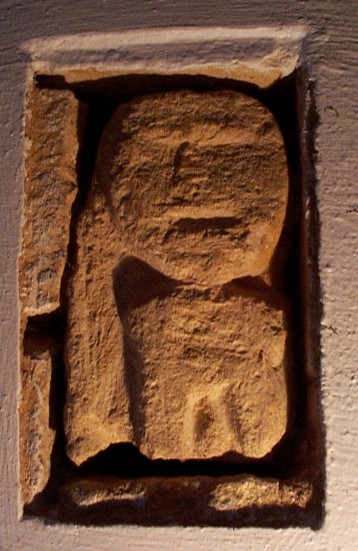 The Sheela Na Gig project. . This figure in the Church seemed promising as a Sheel na gig but does not have all the required features. It is however obviously very old and does have certain sheela type characteristics such as the large head. Go to top |
|
Although no longer based in the area, The Saintbury Trust is a medium-sized grant-making registered charity which seeks to help charities in its geographical area of the West Midlands, Warwickshire, Worcestershire and North Gloucestershire. The Trustees have a particular interest in the arts, heritage, the environment and helping those with disabilities. The majority of the grants awarded are either £1,000 or £2,000. Relatively few exceed £5,000. The Miss Nash Trust Fund gives grants to Willersey Village Organisations. Written requests should be made to Mr Phil Bennett, 2 Ley Orchard, Willersey, WR12 7PW. The Chipping Campden Community Trust started in 1995 and covers not only Chipping and Broad Campden but also Mickleton, Aston, Weston-sub-Edge, Willersey, Saintbury, Ebrington, Charingworth and the Hidcotes. Its principle aim is to enable older people to remain at home when possible and to lead active and productive lives. It also has limited, unrestrictive funds to support individuals and groups where no offical support is available. Contact the Secretary Sue Roberts on 840351 or the Chairman Tony Rose on 840625 for more information. The Trust is providing dementia day care every Thursday fortnight in Mill house, Chipping Campden. If you know of someone who could benefit, please call Kirsty Holder or Bridget Salvage on 01608 652019. The Trust also ran a falls prevention presentation in Willersey Village Hall. |
| Willersey has a facebook page. Go to top | Menu & Search Page Email us here:- |